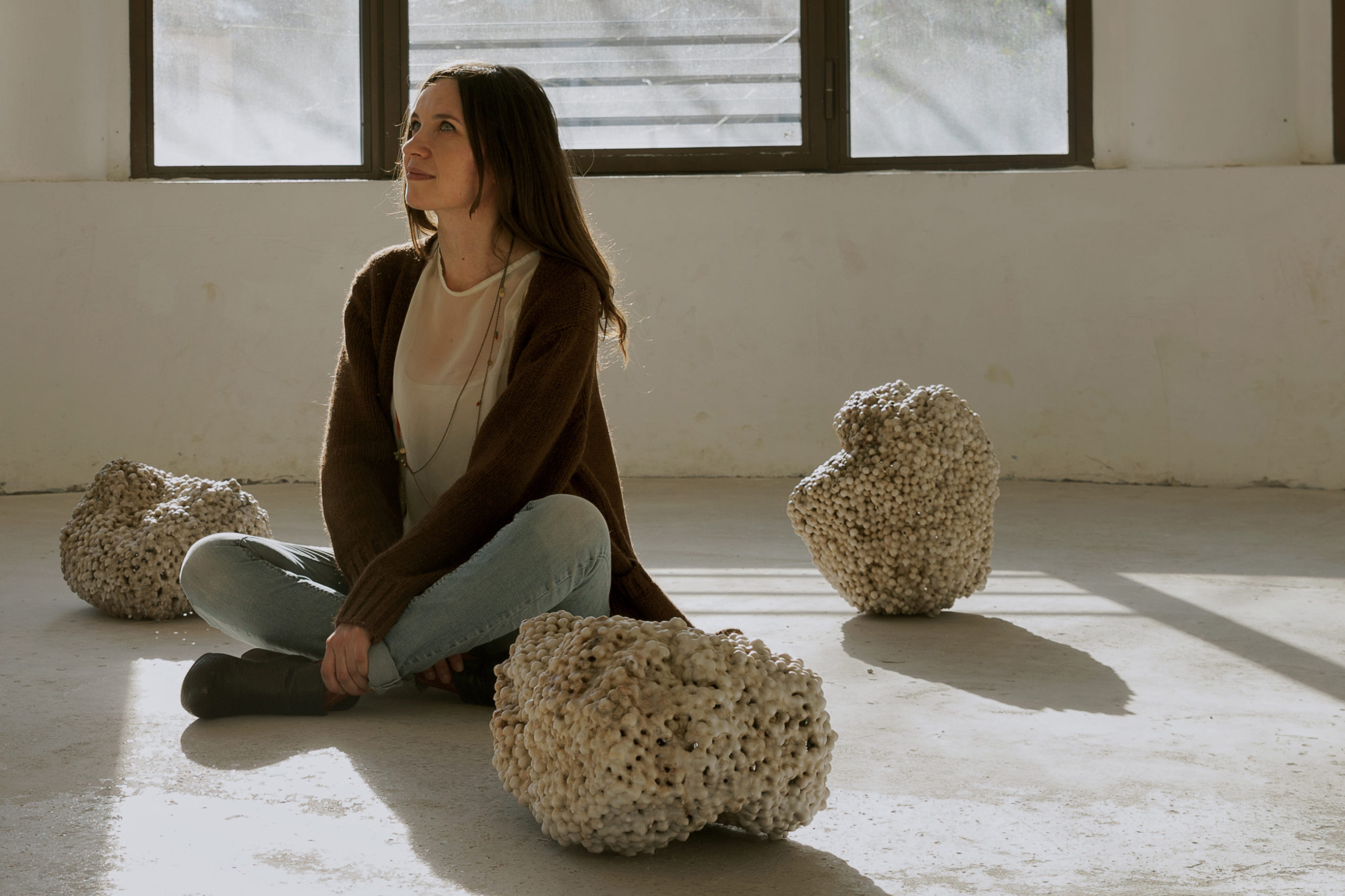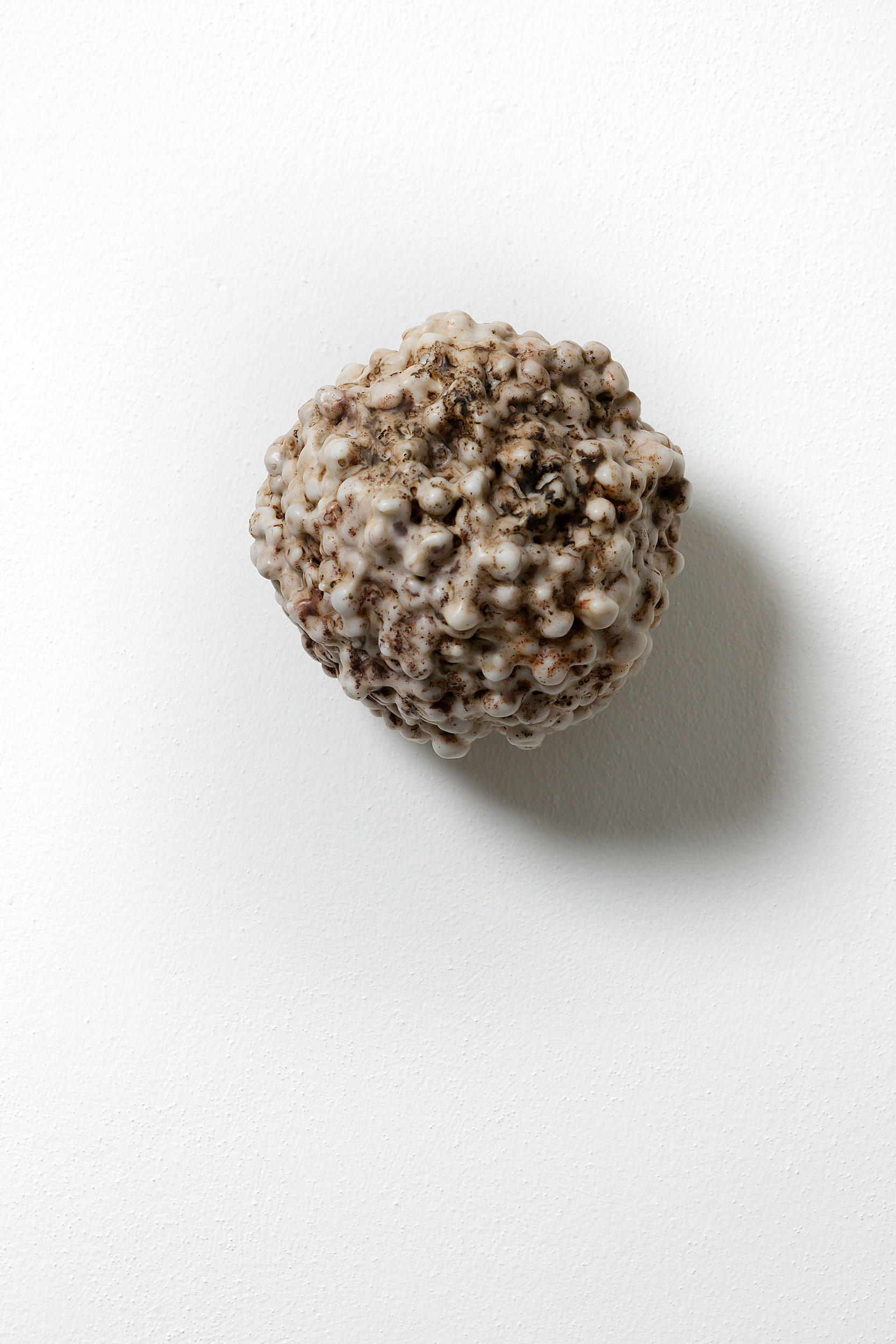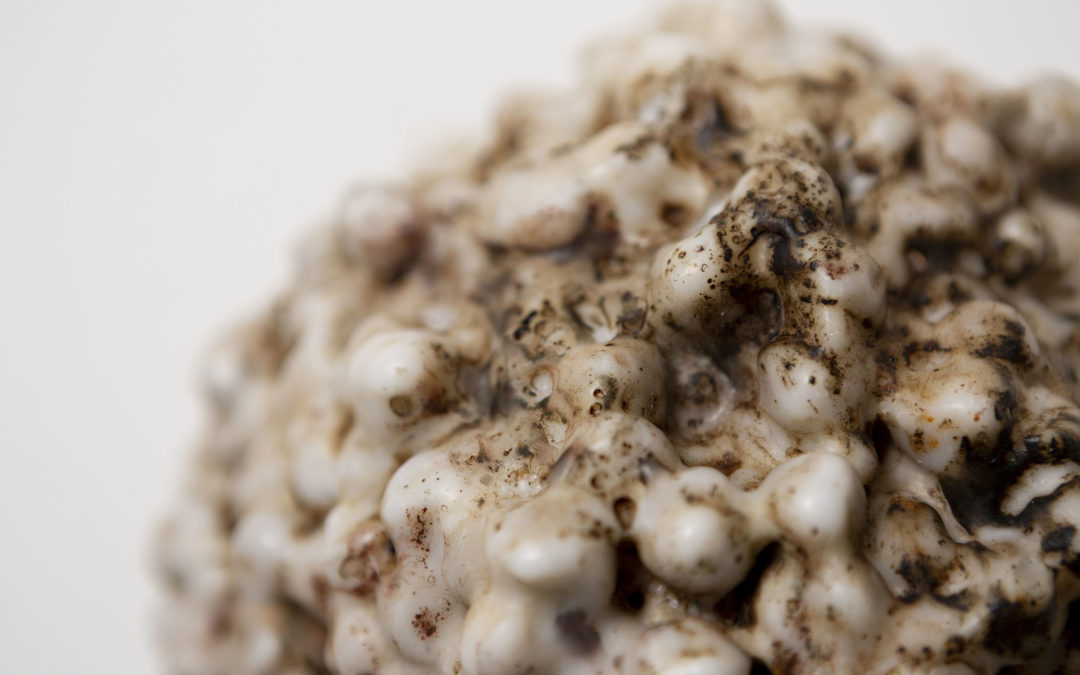Interview to the artist Silvia Infranco
Silvia Infranco is a as delicate as powerful young artist, who makes time and memory her favorite themes and organic elements her preferred materials within her production. We exchange a few words to deepen her artistic path and her work.

Credits: Melissa Cecchini
SpeakART: Good morning Silvia, it is a pleasure to have you here with us.
Let’s talk about you: how did you go from a law degree to be a full time artist? Did your undeniable creative need always express itself or did it suddenly explode?
Silvia Infranco: I would say that my creative need has always expressed itself, but during the years it has strengthened its voice and its resonances inside myself.
I like to think that each of us has an interior humus which welcomes and makes sprout vocations, needs, external perceptions in a different way. Maybe one of the most important bets that we can make with ourselves is to have the courage and the constancy to cultivate the seed that we perceive as more akin to us. I think that the rest comes by itself, sooner or later.
Sometimes during life, regarding one’s truer feeling, it is possible to undertake more or less linear paths, but in the end every step, even wrong, can return something: a meaning, a teaching, a warning, as the awareness of the need to change course can be.
SpeakART: Where do you get the inspiration for your artworks, what is the process that leads to their creation?
Silvia Infranco: Sometimes ideas come from readings, above all classical texts about botany and philosophy, sometimes from the direct observation of nature.
Starting from these elements, little personal archives of drawings, photos, objects collected during walks or found here and there are often created.
And then studio experimentation comes into play, which I consider an important research cue itself as it is strong in me the need to get in touch with the artistic “doing” which often, in my work, translates into the reiteration of a process.
For example in the “Tracciati” cycle, where attention falls on the maceration process, paper is folded over and over again. Later bathings starts. Paper is immersed in a tub where I dissolve earth, oxides, pigments and the immersion time is monitored. Once paper is extracted from water, a delicate phases begins, that is the reverse opening of the folds and the subsequent drying. Before the next bathing, the open paper is stretched, if necessary “cured” through minimal patches, and then the process described above is repeated over and over again until the surface requires the stopping of the maceration process and the last treatment curative, by patching and applying a waxy preservative cream.
In waxes instead, the repetition of the process generates accumulation. In these artworks I start from a wooden base on which melted wax or neutral wax is applied with a brush, or in which oxides or pigments are dissolved. The surface is then ironed and, once resolidification has taken place, the wax, like a matrix, is engraved, covered with bitumen and then discharged from the excess. At this point, the processual reiteration begins through wax glazes which, precisely thanks to the translucency of this substance, allow the eye to perceive the various sign superimpositions and their different levels of depth.
SpeakART: And what are the themes that you most face through your work?
Silvia Infranco: The themes I basically face into my work are connected to the concepts of memory and time course.
I find particularly interesting to observe how different surfaces visually and tactfully respond to the mnemonic occurrence, in its meaning of sediment induced by the intervention process.
I confront myself with materials that are subjected to accumulation or erosion processes, and the results that derive from them reveal different attempts of preservation and resilience of the material that restore multiple sign narratives to the eye and to the touch.
It is a bit like the time course, whose natural outcome with respect to organic forms is death, continued in its progress to enrich the surface it invests with life. Matter does not turn off, changes, preserves, sheds its weight, still teems and resists oblivion.

Silvia Infranco, Melia, 2020, pigments, oxides, bitumen
Credits: Silvia Longhi
SpeakART: Where does the preference for the use of organic materials, in particular wax and water, come from?
Silvia Infranco: Throughout history, wax has always been used by man for the most varied uses: in medicine, in science, more generally in common and daily uses, in art.
It is an organic substance with with countless physical properties that have strongly contributed to the development of a varied and interesting symbolic dimension around it. A dimension that is fertile ground for a series of reflections on the link between man and nature, on the organicity of matter in relation to vital energy, on the time course, on the passage between life and death, on the mystical and spiritual dimension.
In my work, the use of wax assumes particular importance for the meanings connected to the concept of memory, of primary and tactile affectivity, of conservation and impression.
An etymological derivation of the term wax refers to the Greek word κάρα, that is head, face, while in Latin the term caro means meat. In many popular sayings the word wax is used to represent the psychophysical state of an individual deduced from the face and this precisely because of the composition of its impressionable substance and memory.
The health status, the emotionality impresses the wax of the individual, they leave on it memories of facts which, through the face, transpire on the outside in a faithful and truthful way. Wax seems to become a vehicle for the restitution of interiority to the world through the impression of internal memories that both the body and the psyche imprint on it.
But the organicity of this substance also interests me as it can be associated with the vital seed inherent in animal and plant bodies. I am thinking of the birth of wax as an animal glandular secretion which, in its original state, comes in the form of a viscous liquid that solidifies in contact with the air. In its former state, wax is amniotic fluid, a vital source that fertilizes and shapes human or animal matter.
Another aspect I try to investigate in my works is the conservative and suspension capacity underlying this substance. The reference goes to the various practices of organic inclusion in paraffin for conservation purposes or to plants that exude waxy substances to protect themselves, isolating themselves, from external agents or even to the Egyptian mummification processes in which bands impregnated with wax were used to wrap the dead bodies.
Symbolically, in this perspective, wax allows us to go beyond time as it seems to arrest its course. Therefore it can constitute, in human emotional processing, an element of ideal representation of the passage between life and death, as it exorcises the organic transience of matter and illusory it preserves life.
Even water, that intervenes in my work – above all – in the maceration process of the papers, takes on the meaning of an element connected to life, rebirth and death. Water heals, fecundates, purifies, but also decomposes.
Water, like wax, is strongly linked to the experience of touch, to the sensitivity to heat and cold, to the idea of erasing or sealing, and it is the bearer of strong symbolic evocations. I think of the nymphaeum caves, where the underground sources sacred to the Nymphs are born, places where water is not simply a refreshing liquid, it is a chthonic essence that comes from the womb of the earth goddess and the places where it flows are border and connecting places between the earthly world and the underworld. The cult of the dead originated in the caves which are at the same time tombs, where the dead rest, and the pregnant belly of the mother from whom one is born after nine months of gestation immersed in water.
I think that in my work the prevailing intent connected to the use of these organic substances is to bring out the resilience of matter, an attempt to stop the cancellation, through the emergence of rarefied dimensions, but which at the same time come to life again through the organicity, the movement, the heat that are inherent and evoked in wax and water.
SpeakART: Your artworks have an evident common root but at the same time they greatly differ from each other on a formal level, so much so that they can be divided into series. What is the relationship between the various results of such a heterogeneous production?
Silvia Infranco: I think that the heterogeneity of my production is intrinsic to the nature of the research conducted in which the procedural phase leading to the realization of the artwork certainly plays an important role.
I am interested in observing how different surfaces respond to external events to which they are subjected. It is the heterogeneity of these responses that fascinates me and that determines different work cycles.
The process of intervention on the surface slowly progresses by reiteration, generating diversified accumulation or subtraction outcomes precisely on the basis of the different nature of the surface.
The recording of a variegated and perpetual becoming of forms tells me about an underlying and teeming energy flow that springs from matter when it is hit by external events dictated by the passing of time.

Silvia Infranco, Ciò che resta, 2020, mix media (detail)
Credits: Silvia Longhi
SpeakART: Thanks to the relationship with Marignana Arte, at this moment some of your artworks are on display in Venice: in the gallery spaces we could admire “Ciò che resta“, one of your latest works that can be considered as a synthesis of your being an artist. Can you tell us something about it?
Silvia Infranco: The installation proposed within “Oltrenatura” exhibition in the spaces of Marignana Arte, curated by Davide Sarchioni, represents a reflection on the concept of preservation of the organic through the organic.
The installation opens and closes with two fragments of Polaroid, representative of the process that is found within almost all the individual display cases, that is the inclusion in beeswax of an organic plant or animal body.
The storage cases do not so much respond to the need for packaging the content, but rather they want to suggest an attempt to (artificial) reinforcement of the preservative process, an attempt that however wants to play on lightness and suspension.
I see these display cases as a sort of womb, a protective coffer, many small observational chambers on the slowdown or arrest of the decomposition process.
The obvious reference also goes to the old filing boxes of natural history museums, places that I always find extremely fascinating because I perceive them as wunderkammerns within which scientific intent is mixed with an aura of timelessness, suspension and silent magic.
The installation also includes two display cases that contain human “measuring” time instruments, an hourglass and a mirror.
In both cases, the plant element (Gynostemma Penthaphyllum, also known as the plant of immortality) and the beeswax grains oppose to the usual functionality of the object. Observing the hourglass, time seems to have stopped, while the mirror, invaded by the same content, is able to return only a partial and particular vision of the face or the eye which, like wax, can be considered a vehicle for restitution of memories that the body or the psyche impress on it.
SpeakART: Has the situation we are living had an impact on your work? Which are your future projects?
Silvia Infranco: As in general I think for everyone, from a practical point of view for me too, there have been slowdowns such as missed meetings, skipped exhibitions, canceled fairs. Many aspects that unfortunately continue to relate to a state of uncertainty that is not easy as it is persistent and indefinite.
An aspect that perhaps in all this could represent a positive note would be being more induced to focus on one’s own research, even if personally I realize that I have difficulty in structuring forms of constructive artistic isolation in this moment in which the mind represents easy target for the most diverse agents.
Future projects. Certainly, since an exhibition project abroad that I care about has been postponed to next year, I would like to take advantage of this time extension to better investigate the tradition of medieval figured herbaria that will be the heart of this project.

